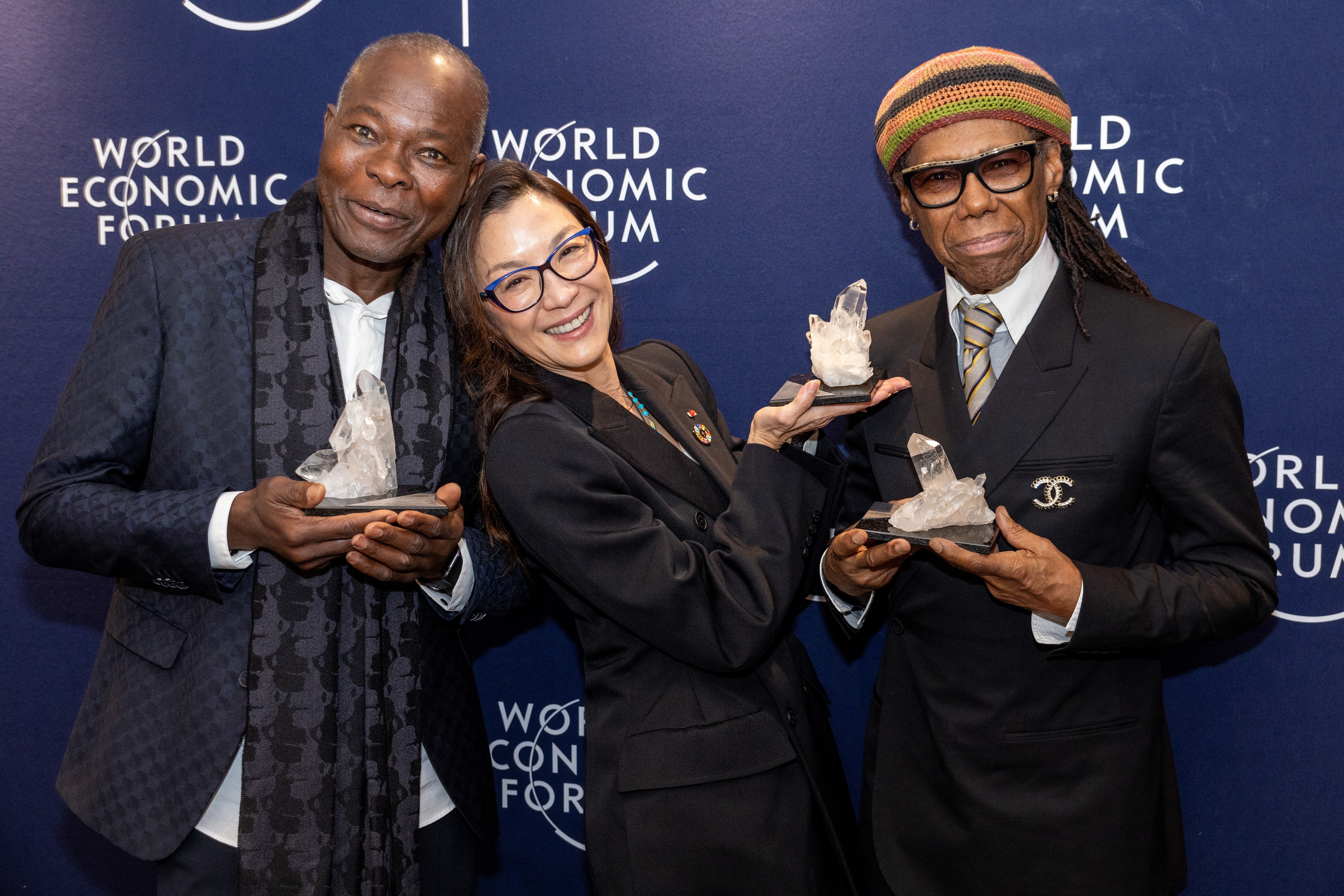Waste is so last year: how the fashion industry is cleaning up its carbon footprint

Image: REUTERS/Jaime Saldarriaga
Printed on a glossy page was a fascinator made entirely from PET bottles perched atop a cover model. They were reminiscent of ethereal flora while its material glinted in the sunlight. Such a piece became one of the “trashion”
campaigns cover images that made “sustainability” more engaging with magazine editors from Asia and the Pacific.
While the creative sphere plays a significant role in promoting the sustainable developmental goals (SDGs), we still ask if the fashion industry will fully embark on a journey towards reducing its carbon footprint. Are we losing faith due to a wide range of scientific controversies, political polemic and poor manufacturing regulations? Or should we be hopeful that more creative leadership and cutting-edge sustainable design will see fashion become increasingly accessible and affordable?
The fashion industry is second only to oil as the top industrial polluter, and as a result is taking broad steps to make it more environmentally conscious.

One of the industry’s prime raw materials is cotton. Though organic cotton is considered to be expensive to grow compared to conventional cotton farming, research shows it is a promising and sustainable alternative.
In 2016, a denim brand started to phase out PFCs (perfluorinated chemicals) thought to pose risks to human health and the environment. The brand has invested in textile finishes with an alternative PFC-free finish that is not classified as hazardous.
Meanwhile, Zero Discharge of Hazardous Chemicals (ZDHC) aims to improve the industry’s environmental standards by implementing guidelines for all products across the supply chain by 2020. It is a collective of apparel and footwear brands that is phasing out hazardous and potentially hazardous chemical substances from the production of fashion and footwear.
Kathleen Talbot, head of sustainability and operations at Reformation - currently one of the leading trend-focused fashion labels - says that a lot of brands now focus on promoting sustainable materials that are sourced or produced organically.
New material sourcing can come in various forms, such as introducing fibers from shredded plastic sieved from ocean trash. The collaborative efforts of Parley Ocean Plastic and a shoe brand resulted in a limited-edition range using ocean plastic. This introduction of upcycled materials to globally accepted consumer goods is an indication that the industry is acknowledging new material sourcing options. However, some people say these initiatives by large labels are simply “green washing” and only skin deep.
Meanwhile, Francois-Henri Pinault - Chairman and chief executive officer or Kering - is also at the forefront of making sure luxury labels commit to sustainability. The establishment of the Material Innovation Lab has institutionalized the commitment of research to develop more sustainable, luxury-grade materials and fabrics.
Just as brands look at material sourcing, labels also look at their operation and business impact. More often than not, this side of the business is the highest contributor to fashion's carbon footprint.
Implementing realistic green-initiatives and cross-industry collaboration, Pinault’s companies are slowly implementing activities geared to achieve the group’s targets by 2020. One goal is the adoption of a metal-free leather-tanning process by one of the group’s brands, which is seen to reduce costs by 25% compared to conventional techniques. The brand is also seeking to work with luxury auto companies to use surplus materials. In an article in the New York Times, Pinault said:
“As a human being, you breathe, you eat, you dream. You cannot not dream. And luxury sparks that. Real luxury is based on authenticity and sincerity — product is almost secondary to the experience. But if your products are not in sync with a higher set of values, then you aren’t going to survive in this business.”
While global trade has increased production and provided economic opportunities elsewhere, the freedom of association is still seen as highly restricted. This has posed serious challenges for labels and companies to trade ethically.
However, in the recent years, industrial relations management has improved significantly. This has allowed organizations such as the Ethical Trading Initiative to work collaboratively with companies and unions on improving working conditions and vulnerable working groups around the world. A couple of the improved sections include textile waste collection, partnerships with fashion re-manufacturers, sustainable fashion designers and mass market retailers.
While market behaviours are largely affected by mass marketing and social construct, conscious consumerism has been seen as a huge movement in the millennial generation.
The campaign #whomademyclothes by Fashion Revolution has inspired consumers to make more responsible fashion choices. It aims to cultivate a culture of assessing goods, such as raising questions on the origin of their products, the process of production, materials used, and if the item is a necessity.
A 2015 study released by Nielsen says that 66% of global respondents, aged 15-20, are willing to pay more for products and services from socially and environmentally committed companies, a percentage which shows an increase up from 55% in 2014 and 50% in 2013.
The days of overconsumption are slowly fading while conscious consumerism is taking its place.
A holistic approach to design and taking advantage of innovative technologies is unlocking the untapped potential of companies. There have been several exciting innovations that are replacing existing materials and processes.
At the forefront are various textile groups that are doing groundbreaking research on new fabrics. More research is being done to transform mundane materials to highly flexible applications. These include the research on tea, faux leather, sieved ocean plastics, closed-loop recyclable polyester and nanotechnology. While these materials are intended to reduce carbon footprint, they are also being seen to improve fabric performance.
While the environmental efforts of some labels will always be scrutinized, the industry as a whole has taken considerable strides. Over and above any initiative, it is still everyone’s responsibility to take action towards achieving positive gains for the environment, people, the economy and our culture. It is best we remain hopeful that the creative leadership in the fashion industry has finally recognized its role in providing the world with socially and environmentally responsible goods and services.
Don't miss any update on this topic
Create a free account and access your personalized content collection with our latest publications and analyses.
License and Republishing
World Economic Forum articles may be republished in accordance with the Creative Commons Attribution-NonCommercial-NoDerivatives 4.0 International Public License, and in accordance with our Terms of Use.
The views expressed in this article are those of the author alone and not the World Economic Forum.
Stay up to date:
Future of the Environment
Related topics:
The Agenda Weekly
A weekly update of the most important issues driving the global agenda
You can unsubscribe at any time using the link in our emails. For more details, review our privacy policy.
More on Arts and CultureSee all
Naoko Tochibayashi and Mizuho Ota
October 23, 2024







